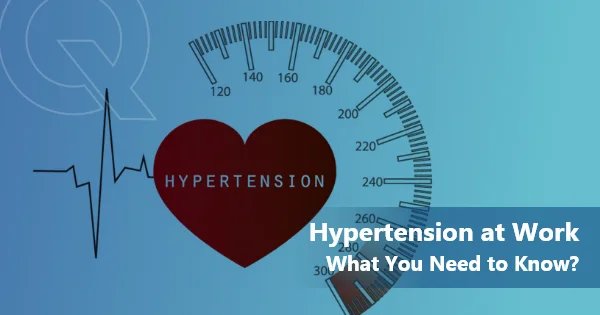Contents
 Hypertension in the Workplace
Hypertension in the Workplace
As the workplace becomes more demanding and highly competitive, organizations have started witnessing a new culture of employees being ‘always on’ – working extra hours and over weekends. Increasing work stress and lack of leisure time has a negative impact on health, which can be directly linked to attrition, decreased productivity and lowering overall business performance. Hypertension, or high blood pressure, is one of the most common problems faced by working people.
Blood Pressure is considered normal at a reading < 140 (Systolic Pressure) and <90 (Diastolic Pressure). High blood pressure is a pressure of 140 systolic or higher and/or 90 diastolic or higher that stays high over time. Hypertension may lead to heart failure, organ damage, kidney failure and stroke, and yet most people consistently exhibit negligence towards this disease.
Costs to the Employer
Here’s how hypertension affects employers:
Lost Productivity: It causes loss of productivity and subsequent loss in output.
Absenteeism: Studies shows that a majority of the employee absences are related to poor health and hypertension is one of the most frequent core causes.
Presenteeism: Low productivity leads people to stay at work longer hours, which not only causes them more stress and worsens health in a vicious cycle, it also lowers the morale of all employees.
How Can the Organization Help?
It is an employer’s responsibility to protect and enforce employee health, safety and welfare by taking a proactive approach in keeping their workers happy and well cared for.
While difficult, it is not impossible to control work stress. Workplace hypertension screening and health risk assessment must be developed to benefit employees, their families and the whole organization in general. This includes specific programs for blood pressure management, stress reduction and smoking and alcohol cessation.
To promote staying healthy while working, the organization can take following steps:
- Stress-relief Activities: The employer can promote stress relief through activities centered on recreation and health. Employees may be encouraged to participate in physical activities like climbing stairs, routine stretches and exercises at their desk, meditation, and yoga sessions. Building a gym in the workplace or providing discounts on fitness club memberships also goes a long way in fighting hypertension.
- Healthy Eating: Exercise and Diet are complimentary. The organization should encourage employees to have a balanced diet – low in sugar, salt, fat and high in fibre. Office canteens should serve healthy food for meals. Stocking healthy snacks, providing sugar-free options for tea and coffee, etc. can also help.
- Employee Motivation: HR Managers can help motivate employees to move towards a healthy lifestyle, which can prevent work hypertension. Employees should be motivated to avoid bad habits like smoking and alcohol and get an appreciation for good work. This helps in dealing with work stress while increasing efficiency and productivity. Encourage employees to take walks around the office.
Staying Healthy
Since there is still no cure for primary hypertension, a good diet, regular exercise and a healthy lifestyle, along with appropriate medication are the only options to control high blood pressure, prevent complications, and help maintain good health conditions for work. Regular health checks will not only encourage employees to stay healthy, it will also help diagnose any health problems right at the onset. Employees are the most valuable resource on any organization and safeguarding their health should be a priority.





